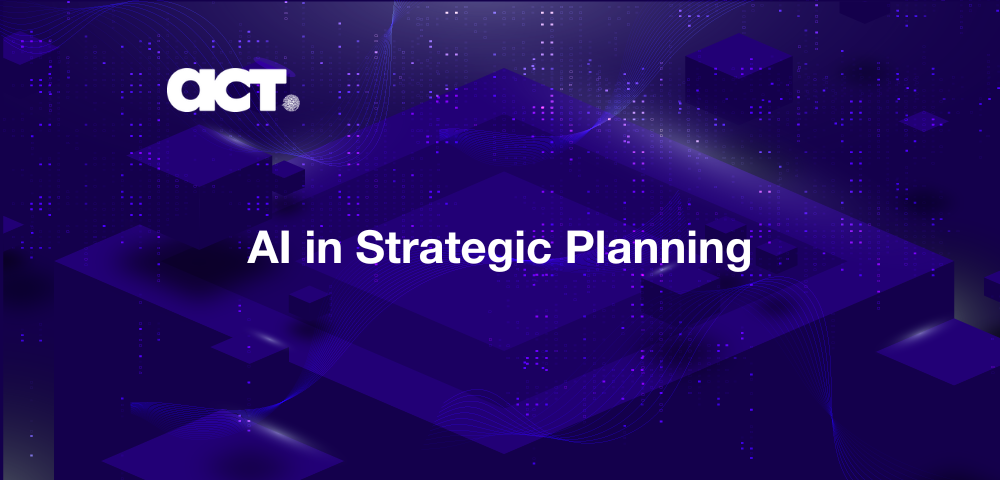“How could they see anything but the shadows if they were never allowed to move their heads?”
― Plato, The Allegory of the Cave
In the cryptic corridors of Plato's allegory of the cave, where shadows dance upon the walls, lies a profound metaphor for the journey from obscurity to enlightenment. Similarly, in the realm of commerce, businesses embarking on the path of platform models traverse a transformative odyssey, breaking free from traditional silos to sculpt interconnected ecosystems that unveil a spectrum of new opportunities.
The allegory of the cave, in which chained prisoners mistake shadows for reality, resonates in the world of digital transformation. Traditional businesses, siloed and internally focused, often lack understanding of the transformative potential of platform models. This article draws inspiration from Plato's metaphor and explores the complexities of platform success in today's digital landscape.
Delving into the academic realm, the concept of digital platform ecosystems emerges as a cornerstone of modern business dynamics. Unlike traditional linear models, where value is created through the production and distribution of goods or services, a platform business model serves as a facilitator, connecting multiple groups of users to create value for each other. Defined as interconnected networks of producers, consumers, and third-party developers, these ecosystems function as vibrant marketplaces where value creation and exchange flourish. Through the orchestration of data, resources, and services, digital platform ecosystems catalyze innovation, foster collaboration, and unlock new avenues of growth.
Platform-based business models encompass a range of specifications that differentiate them from traditional business models. Here are some key specifications, supported by citations:
Network Effects: One of the defining features of platform models is the concept of network effects. As more users join a platform, the value for all participants increases exponentially. (Parker et al., 2016) In scholarly discourse, network effects are regarded as pivotal for the triumph of platforms, fostering a cyclical pattern of expansion and user involvement.
Multi-sided Markets: Unlike traditional businesses that primarily serve a single type of customer, platform-based models often cater to multiple distinct user groups, known as multi-sided markets. (Evans & Schmalensee, 2016).
Data-driven Insights: Platforms are fueled by data, enabling them to gain deep insights into user behavior, preferences, and trends. This data-driven approach empowers platforms to personalize experiences, optimize operations, and innovate continuously. (McAfee & Brynjolfsson, 2017). Furthermore, advancements in artificial intelligence (AI) and machine learning enable platforms to extract actionable insights, predict user behavior, and automate decision-making processes, thereby delivering unparalleled value and driving competitive differentiation.
Ecosystem Orchestration: Successful platform-based models excel in orchestrating ecosystems of complementary goods, services, and stakeholders. This orchestration involves designing interfaces, establishing rules, and fostering collaboration among participants. (Zhu et al., 2019).
APIs and Openness: Platforms often embrace openness through Application Programming Interfaces (APIs), allowing third-party developers to build upon the platform's infrastructure and create innovative offerings. This openness fosters creativity, accelerates innovation, and expands the platform's capabilities.
These specifications collectively define the essence of platform-based business models, showcasing their unique characteristics and competitive advantages in the digital landscape.
The Journey of Business Transformation through Platform Models
Breaking Free from Silos
Traditional businesses often operate in silos, with little interaction between departments and a focus on internal processes. This can lead to inefficiencies, a lack of innovation, and difficulty meeting the evolving needs of customers. Platform models, on the other hand, are designed to facilitate interaction and collaboration between different groups of users. This creates a more dynamic and innovative ecosystem where businesses can leverage the collective intelligence and resources of their users to create new value.
Finding equilibrium between algorithmic regulation and crafting personalized user experiences.
Unlike the single torchbearer in the cave allegory, successful platforms use sophisticated algorithms as conductors, orchestrating complex user journeys. A prime illustration of this is the implementation of recommender systems, which tailor the user experience and enhance overall satisfaction. Netflix's recommendation engine is perhaps the most well-known and widely used recommender system. It uses an algorithm to analyze a user's viewing history, rating, and search behavior to suggest movies and TV shows that the user is likely to enjoy.
Effectively managing platform dynamics, harmonizing the varied needs of stakeholders, and proactively mitigating risks necessitate astute leadership and strategic insight. Furthermore, fostering trust, transparency, and equity within the ecosystem is imperative for cultivating sustainable growth.
Platforms strive to create seamless experiences for customers, aiming to remove obstacles and optimize interactions to enhance satisfaction and loyalty. However, alongside this goal, there is a need for algorithmic governance. Platforms rely on algorithms to moderate content, manage transactions, and mitigate risks. Yet, excessive use of these systems can worsen the user experience, while insufficient regulation may jeopardize data protection and security. Therefore, platform operators must strike a balance between ensuring security with algorithms and delivering the best user experience. Achieving this balance requires platform developers to consider user needs, legal regulations, and ethical aspects carefully
Designing for User-Centricity
Designing for user-centricity is a pivotal aspect of successful platform models, rooted in the principles of empathy and understanding in the digital era. Just as the allegory of the cave underscores the pursuit of truth and enlightenment, businesses transitioning to platform models must embark on a journey to uncover the profound needs and motivations of their users. By placing users at the core of the design process, businesses can craft experiences that resonate deeply, fostering engagement, loyalty, and meaningful interactions.
Leading the Transformation
In an era defined by technological advancement, the transition from conventional to platform-driven models presents businesses with a definitive route to prosperity and expansion. This strategic evolution necessitates a systematic approach centered on three fundamental components:
- Embrace a Platform Mindset: The journey towards platform success begins with a fundamental shift in mindset. Organizations must transcend traditional, linear thinking and cultivate an ecosystem mindset where value is co-created by a diverse array of stakeholders. Whether it’s creating new revenue streams, fostering ecosystems, or harnessing the power of data and AI, platform models offer a blueprint for innovation and agility in an increasingly interconnected world. By adopting a platform mindset, businesses can unlock new opportunities, forge deeper relationships with customers, and chart a course towards sustainable success in the digital age.
- Master Platform Design: A deep understanding of platform design principles is essential for organizations seeking to thrive in the digital landscape. This encompasses the creation of dynamic, two-sided marketplaces that facilitate seamless interactions between producers and consumers. Moreover, mastering the art of incentivization and network effects is paramount for cultivating a vibrant and self-sustaining ecosystem. Through meticulous planning and strategic execution, businesses can unlock the full potential of their platform and position themselves as industry leaders.
- Become an Orchestration Expert: Effective management and orchestration are critical components of platform success. Organizations must develop the capabilities to navigate the complexities of their ecosystem, balancing the needs of various stakeholders while maintaining operational efficiency and scalability. This involves establishing clear governance structures, fostering trust and transparency, and leveraging data-driven insights to drive informed decision-making. By serving as effective orchestrators of their platform ecosystem, businesses can create value for all participants and drive sustainable growth over the long term.
Platform business models represent a paradigm shift in the value creation equation of the digital economy. Leveraging networks, ecosystems, and data, platforms have the potential to not just drive business growth, but to transform entire industries. However, unlike Plato's cave, the digital landscape is a dynamic ecosystem in constant flux. Platform success isn't a one-time disruption, but a continuous performance demanding constant adaptation.
Rohn D., Bican P. M., Brem A., Kraus. S, Clauss Th. (2021) Digital platform-based business models – An exploration of critical success factors, Journal of Engineering and Technology Management, Volume 60.
Parker, G., Van Alstyne, M. W., & Choudary, S. P. (2016). Platform revolution: How networked markets are transforming the economy--and how to make them work for you. W. W. Norton & Company.
Evans, D. S., & Schmalensee, R. (2016). Matchmakers: The new economics of multisided platforms. Harvard Business Review Press.
McAfee, A., & Brynjolfsson, E. (2017). Machine, Platform, Crowd: Harnessing Our Digital Future..
Zhu, F., Iansiti, M., & Lakhani, K. R. (2019). Competing in the Age of AI. Harvard Business Review Press.






